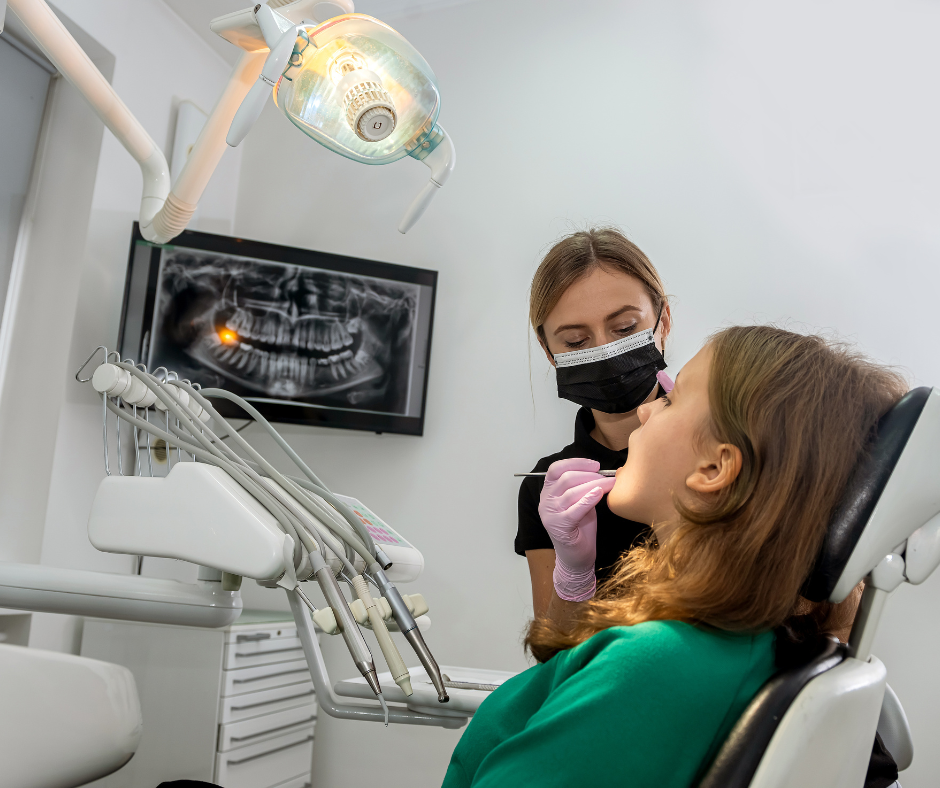When most people hear about orthodontics, the image that comes to mind is probably a preteen with braces. However, orthodontic care for children can—and should—start much sooner. According to the American Association of Orthodontists, pediatric orthodontic evaluation should start by or before age seven.
There is no shortage of benefits that come with early orthodontic evaluations. An experienced orthodontist can identify signs of current or potential dental problems in their beginning stages, giving them the flexibility to determine if treatment is required and when your child could need it. Plus, catching and treating conditions early on can reduce or prevent the need for more intensive procedures, such as tooth extractions, later on.
What do orthodontists look for during evaluations?
During a pediatric evaluation, an orthodontist will look for a wide variety of dental problems, including:
- An underbite or crossbite
- Overlapping teeth
- Malformed teeth
- Missing teeth
- Extra teeth
Discovering any of these issues will help the orthodontist determine how to best correct the problem and prevent more from popping up in the future.
Is seven years old too young for pediatric orthodontics?
Simply put, no. Even if your child has a mix of baby and permanent teeth, enough adult teeth have erupted for an orthodontist to predict how the remaining adult teeth will come in and if they will cause overcrowding or other issues.
Many parents are hesitant to begin orthodontic treatments at an early age. But remember, evaluation doesn’t automatically mean treatment. While some issues might call for corrective measures in young patients, many are often identified in their beginning stages and monitored until starting treatments later.
What issues or conditions would require early orthodontic treatment?
Of course, there are some issues or conditions that might prompt an orthodontist to recommend treatment for young children. An orthodontist may suggest corrective or preventive measures if your child:
- Has problems speaking or chewing
- Experiences clicking or popping in their jaw
- Grinds their teeth
- Has issues with biting the inside of their cheeks or the roof of their mouth
- Is experiencing abnormal bite development
Another cause for concern with developing teeth is thumb sucking. While it’s a common habit for young children, sucking thumbs or fingers past the age of five can lead to teeth sticking out farther than they should.
What kind of treatment would an orthodontist suggest for young children?
“Orthodontic treatment” doesn’t have to mean braces, especially for young patients. Two common corrective or preventive treatments recommended for children are palatal expanders and space maintainers.
Palatal expanders create more space in the mouth to prevent or relieve overcrowding by gently widening narrow jaw bones.
Space maintainers are a good option for children who lose their baby teeth too early. Maintainers hold the space where the lost tooth was and prevent other teeth from shifting into it so their adult teeth can erupt and develop normally.
Let’s start your child’s orthodontic care together.
At Thunderbird Kid’s Dentistry & Orthodontics, we know the importance of pediatric orthodontics and starting care early. Schedule an appointment with a Thunderbird Kid’s Dentistry & Orthodontics orthodontist today to give your child the best smile possible tomorrow.

